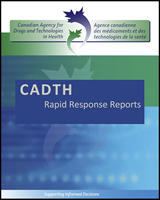Post-traumatic stress disorder (PTSD), generalized anxiety disorder (GAD), and depression are psychiatric disorders that interfere with daily-life activities. In Canada, the prevalence of PTSD is approximately 12%, 2.6% for GAD and 8% for depression. These mental disorders result from brain dysregulation, such as neurological over-arousal (e.g. anxiety), neurological under-arousal (e.g. depression) or instable-arousal (e.g. PTSD), in that patients have problems in intentionally controlling neural functioning. Patients with mental health disorders usually require pharmacological and/or psychological interventions such as cognitive-behavioral therapy, however approximately two-thirds of patients with major depressive disorder do not have adequate responses to conventional treatments.
A potential alternative to pharmacological and psychological interventions are brain stimulation techniques such as transcranial magnetic stimulation (TMS). TMS is a non-invasive technique, whereby a small coil placed over a patient’s scalp. The electric current circulating through the coil produces a magnetic field which can then pass through the scalp and bone and induce changes in nerve cell activity in the cortex. The effect of the magnetic stimulation is dependent on location, intensity and frequency of the magnetic pulses. Its repetitive form is referred to as repetitive TMS (rTMS), and has been used for diagnostic and therapeutic purposes in a variety of neuropsychiatric disorders. Two emergent forms of TMS include theta-burst magnetic stimulation (TBS) and EEG-based synchronized TMS (sTMS). TBS involves the use of a triple-pulse burst in either a continuous or intermittent form and is thought to induce longer-lasting effects, while it is the intent of sTMS to identify the most optimal stimulation protocol for an individual patient in real-time.
TMS was initially used to investigate nerve conduction. It can be used as a tool for brain mapping, as a probe for neuronal networks, and as a modulator of brain function. Clinically, brain stimulation has been found to improve symptoms of depression, however due to the multifactorial nature of the intervention, the overall effectiveness of TMS for the treatment of depression remains unclear. Even less well known is the efficacy and effectiveness of TMS for the treatment of PTSD and GAD.
The purpose of this report is to review the clinical effectiveness of TMS for treating PTSD, GAD and depression, and to summarize the guidelines that are associated with the use of TMS for these conditions.
Disclaimer: The Rapid Response Service is an information service for those involved in planning and providing health care in Canada. Rapid responses are based on a limited literature search and are not comprehensive, systematic reviews. The intent is to provide a list of sources of the best evidence on the topic that CADTH could identify using all reasonable efforts within the time allowed. Rapid responses should be considered along with other types of information and health care considerations. The information included in this response is not intended to replace professional medical advice, nor should it be construed as a recommendation for or against the use of a particular health technology. Readers are also cautioned that a lack of good quality evidence does not necessarily mean a lack of effectiveness particularly in the case of new and emerging health technologies, for which little information can be found, but which may in future prove to be effective. While CADTH has taken care in the preparation of the report to ensure that its contents are accurate, complete and up to date, CADTH does not make any guarantee to that effect. CADTH is not liable for any loss or damages resulting from use of the information in the report.

